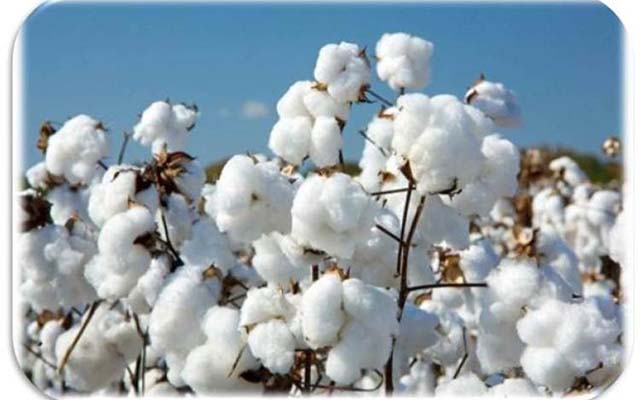Private cotton buyers exposed

Business Reporter
GOVERNMENT stands to be prejudiced of significant quantities of cotton, which it is ordinarily entitled to especially after providing farmers with inputs, after it emerged that private cotton companies have resorted to buying the crop at night, dampening prospects of revival of the sector.
The companies are also allegedly directly approaching farmers in violation of standing regulations. Under local laws, cotton is sold at specific designated points that are supervised by the Agricultural Marketing Authority (AMA), the regulator.
Investigations by The Herald in Sanyati revealed that some private companies, taking advantage of the manipulated AMA data base, are helping farmers to transport their cotton to buying points where they would have more farmers registered under their companies from areas exclusively funded by the Government.
Some of the flaws in the data base include multiple registration of farmers by contractors.
In addition, there are unconfirmed reports that some senior politicians in Sanyati were being bribed to facilitate side marketing in favour of private firms under the guise that the crop contracted by Government could be sold to any licensed cotton merchant.
AMA issued buying licenses to six companies, including Cottco.
The investigations involved interviews with state security agencies, AMA officials at various buying points, farmers, transporters, political leaders and officials from some private companies.
The marketing season, which began a month ago, has been stained by unprecedented reports of side marketing, with private players using all sorts of tricks to lure farmers contracted by the Government.
It is now feared that Government may fail to recover its investment in light of side marketing.
Some have taken advantage of the prevailing cash shortages by paying spot cash at buying points.
Cottco, the Government agent in the cotton industry, is paying up to $200 on the spot and the remainder is deposited into either bank accounts or mobile wallets.
Private companies are paying prices slightly above 47c, the base price the Government is paying for the lowest grade.
Last season, Government, through Cottco, provided free inputs worth $42 million to more than 300 000 households as part of measures to revive the sector.
This translates to 80 percent of funds invested in production, including by five other private firms.
“We are so concerned with what is happening on the ground because these private companies are causing a lot of problems,” Cotton Producers and Marketers Association of Zimbabwe chairman Mr Stewart Mubonderi said.
“They are using all sorts of tricks.
“They are paying spot cash to lure the farmers; not bond notes, but US dollars. They are now buying cotton during the night or assist farmers to transport the crop from areas that were sorely funded by the Government to areas where they only provided ‘cosmetic’ financing just to warrant their presence at common buying points.”
Reserve Bank of Zimbabwe governor Dr John Mangudya said the funds that were deployed to support cotton farmers should be properly accounted for, describing side marketing as counterproductive.
An official with AMA, stationed at a buying point in Sanyati, confirmed the disorder characterising the cotton marketing season mainly due to the controversial data base.
The official also claimed some companies had been spreading the message that Cottco was reducing the price to 35c, a development which saw many farmers delivering their crop to private merchants.
At one of the buying points, an AMA cleck recommended the suspension of buying as a result of unusually high deliveries to private companies, particularly Olam International and Alliance Ginneries.
“It is very difficult to work because if you look at the data base, it is in shambles. You can find one farmer appearing to have been contracted by all companies. Secondly, the data base does not show the hectarage supported, which would ordinarily help us to estimate the output, in case the farmer attempts to sell on behalf of others,” said the official.
Farmer Mr Never Tshoga from Sanyati – who received the full complement of inputs from Government – confirmed being accosted by Olam International to sell his crop.
“At some point I agreed and packed my cotton in their woolpacks. They even wanted me to moblise other farmers to sell their cotton to Olam, but I have turned them down,” he said.
Effort to get a comment from Olam proved fruitless by the time of going to print.
ZANU PF district chairman of Vhere/Nyoka area Mr Tashinga Mowanigwa, who was involved in distribution of inputs, said side marketing had become rampart, urging authorities to take action.
“Most of these farmers who are now side marketing did not get inputs from private companies. But they are now selling cotton to them because they are paying an additional US3c than what Cottco is paying forgetting they had already received about 18c through the input subsidy. We also need the Reserve Bank to probe the source of cash these Chinese and Indians are using when the country is facing a cash crisis,” he said.
Zimbabwe produced 30 000 tonnes of cotton last year despite a $26 million free inputs package from the Government. Apart from drought, production is also being affected by abuse of inputs by farmers, poor agronomic practices as well as side marketing.
Last year’s cotton production was the lowest in more than two decades.










Comments